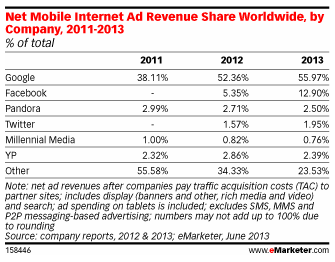Communities & Cluster erobern die Verlagswelt

In diesem Frühjahr habe ich mir das Buch „
Finding the Future of Digital Book Publishing“ über DBW (Digital Book World) gekauft. In diesem Buch berichten Vertreter der Publishing Industrie, wie sie dem digitalen Wandel im eigenen Haus begegnen. Die Interviews liefern einen hervorragenden Einblick auf die derzeitigen Herausforderungen und Strategien der Verlage. Besonders aufgefallen ist mir ein Statement von F+W Media Chairman und CEO David Nussbaum. Er schreibt in seinem Beitrag mit dem Titel „Rebuilding the Media Company of the Future“:
„In my first town hall, I said to the company, ‘I want you to forget about being a publishing company because we’re now a media company.’ I brought in digital people to help, too. We invested heavily in technology. We digitized all the products. We built the digital team. We moved from that interactive division to having a digital media team investing in digital products.“
Ein mutiger und kluger Schritt, denn der Verlag F+W Media eingeschlagen hat. Und die Erfolge stellen sich bereits ein. So verkündete David Nussbaum kürzlich auf der Publisher Launch Conference in New York, dass das e-commerce Business von F + W zu einem Multi-Million-Dollar Business heranwächst. Nussbaum
prognostizierte für den Verlag einen Umsatz im e-commerce-Bereich in Höhe von 50 Millionen US-Dollar im Jahr 2014.
Alles wird digital und einhergehend mit dem Wandel müssen Verlage auch ihre Mitarbeiter dafür gewinnen. Digital Natives und technologieorientierte Experten müssen Veteranen aus dem Publishing Business unterstützen, neue Teams und Abteilungen müssen im Unternehmen gestaltet werden, um dem Wandel zu begegnen. Die Produktion von eBooks ist das eine, die Diversifikation ganzer Produktlinien etwas völlig anderes.
In Deutschland erleben wir derzeit den Wandel besonders deutlich bei Gruner + Jahr. Dort plant die Deutschland-Chefin Julia Jäkel den Umbau bisheriger Strukturen in diesem Herbst, um die Vermarktung der vielfältigen Magazine über alle Kanäle (Print, Online und E-Commerce) voranzutreiben. Sie plant wie kürzlich in der w&v (Ausgabe Nr. 26) zu lesen war die Produktionen des Hauses auf sechs Communities of Interest (CoI) aufzuteilen. Die sogenannten Segment-Cluster heißen dann Kochen, Living, Familiy, Beauty und Mode, Wissen und Stern.
Die Cluster-Idee stammt von Adam Bird, Medienexperte bei McKinsey. Eine ähnliche Strategie verfolgt auch David Nussbaum, wie er in seinem Interview mit DBW erzählte:
“We made the decision to do a few things. First is we reorganized the company. The company essentially had four separate divisions: books, magazines, interactive (Web), and a relatively small events divisions. What was interesting was you could have community-focused plans in four different divisions. So, one of the first major moves was to throw all the cards up in the air and have it come down and form community divisions.”
Interessant an dieser Strategie ist, dass nicht mehr die Vermarktungskanäle und Produktionen im Vordergrund stehen, sondern Communities & Cluster. Einen ähnlichen Ansatz ist auch bei Martin zu finden, der im letzten Jahr die
Community Centric Strategie entwickelt hat. Auch Martin hat jahrelange Erfahrung in internationalen Medienhäusern und basierend darauf seine Theorie aufgebaut. Es geht für Medien wie für Marken zukünftig nicht um Zielgruppen, die entweder Print, Online oder Mobile lesen. Es geht vielmehr um die Frage, wo findet welches engagierte Mitglied in der Kommunikation um eine Marke den ihn/sie interessanten Content in einem Kontext wieder, sodass sich daraus ein Gemeinschaftsgefühl weiterentwickelt, dass sich die Marke oder Produkte aus der Community heraus weiterentwickelt.
Was hier komplex klingt, ist eigentlich ganz simpel. Verlage differenzieren zwischen Handels- und Endkunden-Kommunikation. Es geht aber zukünftig vielmehr darum die Stränge zwischen den Wertschöpfungsketten zusammenzuführen und miteinander an der Verbesserung einer Marke arbeiten zu lassen. Es geht also zukünftig um Themencluster, um Inhalte, die in Communities stattfinden, und um die Erweiterung ganzer Produktlinien durch Produktdiversifikation. Mit der Aufteilung in Cluster und Communities findet die Verlagsbranche vielleicht auch endlich wieder einen ganz neuen Weg Konsumenten anzusprechen und diese zu binden.

 Many brand managers ask themselves (and us in seminars) how a shitstorm begins. We most often tell them that many shitstorms are not real business problem but more a “verbal foul-mouthed fart” as we called it some weeks ago in one of the courses at the Executive Campus of the University of St. Gallen.
Many brand managers ask themselves (and us in seminars) how a shitstorm begins. We most often tell them that many shitstorms are not real business problem but more a “verbal foul-mouthed fart” as we called it some weeks ago in one of the courses at the Executive Campus of the University of St. Gallen.


 There are different views on why
There are different views on why  Now, although mobile ad revenue is far from reaching big amounts of ad spendings, many marketers see it as a growth area. Whatever the number that is attached to total mobile ad revenue worldwide is, Google is the leader with over half of surveyed people according to eMarketer. And if you see the numbers it seems that Gogle is still not happy with the budget chunk they do get, reaching out for more it seems. But also Facebook investors will see some light at the end of the tunnel with mobile ads on the rise. However, Google might like the competition but all that market dominance simply making way for some more challenging competition.
Now, although mobile ad revenue is far from reaching big amounts of ad spendings, many marketers see it as a growth area. Whatever the number that is attached to total mobile ad revenue worldwide is, Google is the leader with over half of surveyed people according to eMarketer. And if you see the numbers it seems that Gogle is still not happy with the budget chunk they do get, reaching out for more it seems. But also Facebook investors will see some light at the end of the tunnel with mobile ads on the rise. However, Google might like the competition but all that market dominance simply making way for some more challenging competition.


